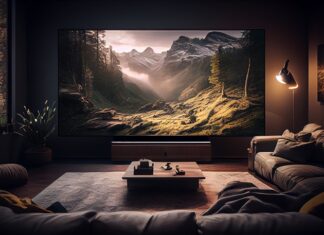The GP2 feature race at Spielberg in Austria was once again enlivened by tyre strategy, with different tactics allowing drivers who had qualified further down the order to challenge for the win. In GP3, tyre management was key to victory in both races.
The medium and supersoft P Zero tyres were nominated for GP2, while GP3 used the soft tyre only. For the GP2 feature race, there were split strategies, with ART’s Stoffel Vandoorne using the supersoft tyre to set a record seventh consecutive pole position.
But some of those who qualified further down the order chose to start the race on the medium tyre – and these two choices provided the strategic element to the race.
Vandoorne made his pit stop from supersofts to medium on lap seven, one lap after the pit window opened, but lost position compared to his direct rivals on the same strategy (Rapax’s Sergey Sirotkin and ART’s Nobuharo Matushita) with a slow stop.
Vandoorne passed both of them on the track, but needed to make sure he had enough pace on his new medium tyres to challenge the current leaders who would eventually pit and change to supersoft at the end.
DAMS driver Alex Lynn chose to start on the medium tyre from ninth on the grid in the hope of eventually taking the race lead. But he lost time behind his team mate Pierre Gasly, meaning that he could not capitalise on the strategy after he changed to supersofts with 12 laps to go. Nonetheless, he fought his way up to third at the finish, behind Vandoorne and Sirotkin.
Vandoorne commented: “It was one of my hardest races of the season. First, I locked up in turn 2 and had a massive flat spot, which really compromised my supersoft tyres. I tried to box quite early but we did not have a great pit stop. The outlap was difficult with the prime tyres to get them up to temperature. By the time I was in the traffic, I knew Alex was setting really competitive laptimes so I had to try and make my way through. Once I got clear, the pace was really good and the medium tyres worked really well for us. It was just a question of trying to manage the gap to Alex. I thought he was going to fight for P2 or P1, depending on how big the gap was going to be after the pit stop.”
With the whole weekend having been cool, Sunday’s GP2 sprint race was held under threatening clouds. Hilmer Motorsport’s Nick Yelloly was slow to start, allowing Campos Racing’s Rio Haryanto to take the lead. The Japanese driver managed his pace and his tyres carefully to win the race, although his front wing was damaged by contact against his closest challenger, Russian Time’s Artem Markelov. Vandoorne finished second to increase his championship lead.
In GP3, all the tyre compounds have been made softer this year. Luca Ghiotto, driving for Trident, claimed his third pole position in four GP3 events and managed to eventually convert it to a maiden victory, after a controlled drive on Saturday.
At the start though, the Italian was overtaken by Esteban Ocon (ART), before a four-lap safety car period. Ocon made a mistake after the re-start and slipped to third, while Ferrari protégé Antonio Fuoco, driving for Carlin, eventually finished second from sixth at the re-start. As had been the case at the last round in Spain, there was a lengthy safety car period. Tyre wear was still considerable however, underlining the on-the-limit nature of the GP3 tyres, which guarantee a good show.
Ghiotto commented: “After the start, I was afraid I would finish second, but then I got back in front. We were really fast alone at the front, so it was just about managing the tyres. We had a car which really helped me manage the tyres well.”
Colombian driver Oscar Tunjo took a maiden win in GP3 on Sunday, where tyre management was crucial after another safety car. Tunjo’s achievement, and his ability to get the most out of the tyres, was made even more impressive by the fact that he started from ninth on the grid. The Trident driver was able to push as soon as the safety car came back in, but without taking too much life out of the compound.
Pirelli’s racing manager Mario Isola concluded: “Oscar managed his tyres perfectly, knowing when to push and when to save them in order to give himself the best possible opportunity to maximise his performance. As a result, he went from ninth to first. Tyre strategy was also at the centre of GP2: it was fascinating to watch the battle between Stoffel and Alex unfold, on completely opposite strategies. It could have gone either way, with both drivers pushing to the maximum.”



























